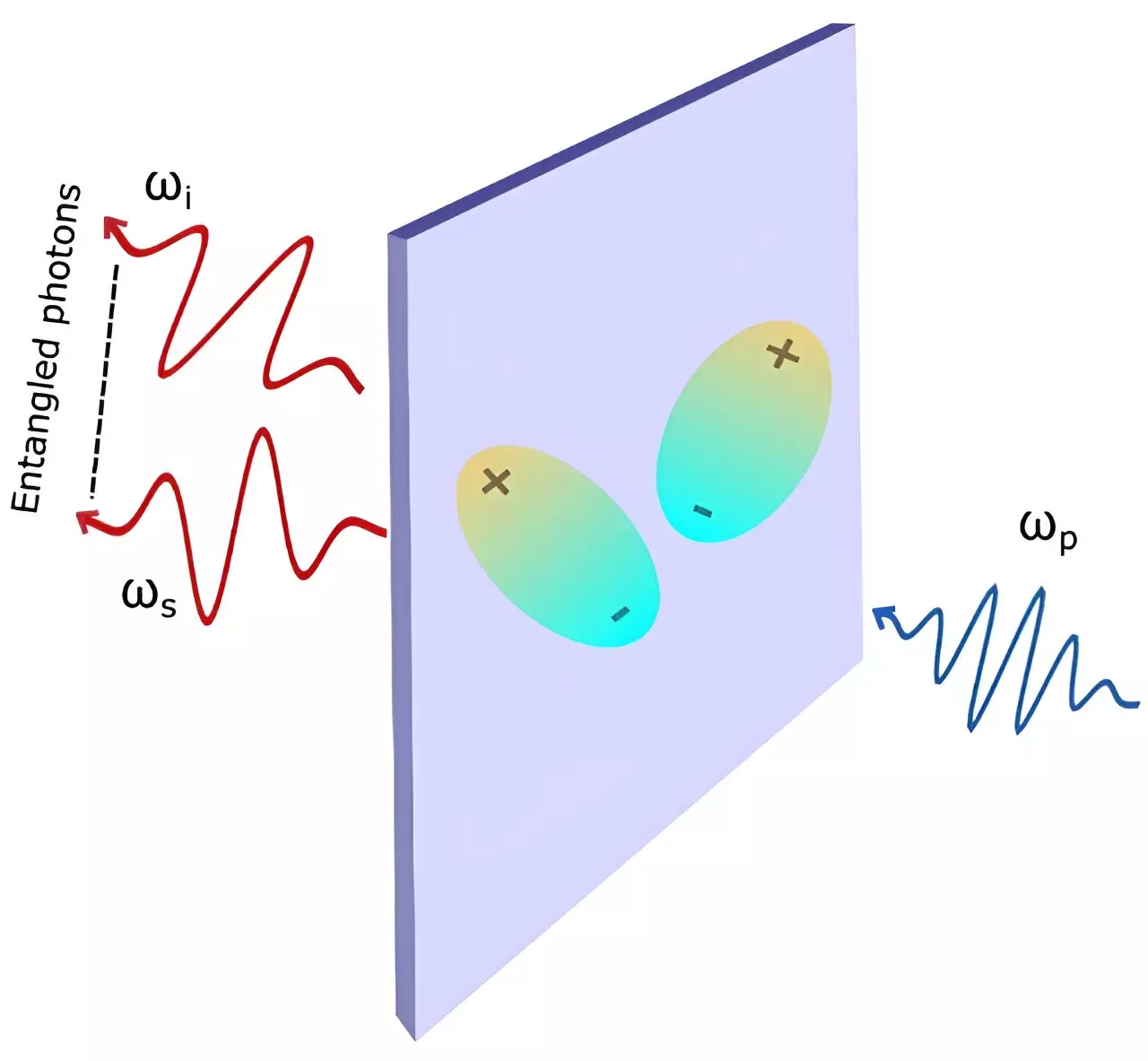Quantum technologies have emerged as a transformative frontier in the quest for advances in computing, communication, and sensing capabilities. At the heart of these technologies lies quantum entanglement, a phenomenon that links the properties of quantum particles over distance, enabling remarkable applications such as secure communication and enhanced computational power. Recent research by a team of scientists at the National University of Singapore (NUS) highlights a promising method to enhance the generation efficiency of entangled photon pairs, a fundamental requirement for the realization of practical quantum technologies.
Quantum entanglement occurs when two photons become correlated, meaning the properties of one photon cannot be described independently of the other, regardless of the distance separating them. This unique behavior is instrumental in quantum mechanics, making entangled photons critical for various applications, including quantum cryptography and quantum teleportation.
Traditionally, entangled photons are created via a non-linear optical process known as spontaneous parametric down-conversion (SPDC). In this method, a pump beam is directed at a non-linear optical crystal, resulting in the conversion of a single photon into a pair of entangled photons. Despite its significance, the SPDC process is naturally inefficient, presenting limitations for practical implementations of quantum technologies.
The NUS team, spearheaded by Associate Professor Su Ying Quek, has identified that the efficiency of SPDC can be markedly improved by investigating many-body excitonic interactions within the non-linear optical crystals. These interactions involve the coupling of electron-hole pairs, known as excitons, which arise from the optical excitations inside the crystal structure.
The research indicates that closely spaced excitons amplify the likelihood of successful exciton transitions, which in turn enhances the SPDC efficiency. By employing quantum mechanical models, the researchers effectively analyzed the optical response of crystal structures subjected to incident light, yielding insights into how excitonic effects can be strategically harnessed to optimize photon generation.
Additionally, the researchers have explored the potential of ultrathin crystals in SPDC applications. Historically, the use of ultrathin materials posed challenges due to a phenomenon known as phase matching, where the alignment of photon energies becomes problematic. However, the findings reveal that the stronger excitonic interactions inherent in these thinner materials may counteract efficiency losses typically associated with reduced material volume.
Professor Quek emphasizes that this understanding facilitates the utilization of ultrathin crystals as viable sources for producing entangled photons, thus expanding opportunities in the field. Such ultrathin materials lend themselves well to integration into hybrid quantum-photonic platforms, fostering the development of next-generation quantum devices.
The implications of this research are profound, paving the way for ultrathin quantum light sources that sit at the intersection of efficiency and practicality. The rigorous simulations and theoretical models applied to layered materials like NbOI2 not only align with experimental observations but also refine methodologies for achieving efficient photon pair generation. The study revealed that the enhancement of SPDC is most potent when the frequency of the pump beam resonates closely with specific excitation energies within the crystal.
Ultimately, the work of the NUS team signifies a significant leap forward in the generation of entangled photons. As the demand for sophisticated quantum technologies continues to grow, the exploration of novel materials and techniques to enhance the efficiency of photon generation becomes increasingly vital. By shedding light on the intricate interplay of excitonic interactions within non-linear optical crystals, researchers are unlocking new avenues for the realization of scalable quantum communication systems and advanced computational networks.
The quest for efficient entangled photon sources has taken a promising turn with the NUS study, indicating a bright future for quantum technology applications.

